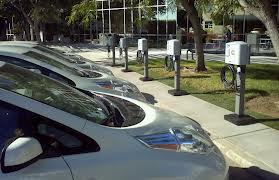 As you probably know by now, the Federal Highway Administration released a map last week showing 55 routes across the U.S. for charging plug-in vehicles and refueling alternative fuel vehicles, with 48 designated charging routes in the new corridor. The Alternative Fuel Corridors covers 35 states and nearly 85,000 miles, according the U.S. Department of Transportation’s FHWA. More miles will be added to the network to accommodate electric, hydrogen, propane autogas, and natural gas vehicles as more alternative fueling and charging stations are built.
As you probably know by now, the Federal Highway Administration released a map last week showing 55 routes across the U.S. for charging plug-in vehicles and refueling alternative fuel vehicles, with 48 designated charging routes in the new corridor. The Alternative Fuel Corridors covers 35 states and nearly 85,000 miles, according the U.S. Department of Transportation’s FHWA. More miles will be added to the network to accommodate electric, hydrogen, propane autogas, and natural gas vehicles as more alternative fueling and charging stations are built.
The designation of these corridors comes from the “Fixing America’s Surface Transportation” (FAST) Act, which was signed by the president in December 2015. In July, U.S. Transportation Secretary Anthony Foxx put the alternative fuel station provision in motion by calling on states to nominate national plug-in electrified vehicle charging and hydrogen, propane, and natural gas fueling corridors along major highways.
You can view an Alternative Fuel Corridors resources page that includes a map showing each of the charging and fueling networks. There’s only one electric charging route linking the nation, which crosses the Great Plains with Highway 70 bridging between Utah and Colorado. Charging station routes are concentrated in the Northeast, East Coast, Great Lakes region, Texas, and the West Coast. Compressed natural gas will have corridors very similar to charging networks. Hydrogen fueling routes will be concentrated in California, Colorado, the Midwest, and the Northeast.
During a telephone interview with CNBC on Friday, Tesla CEO Elon Musk didn’t support the corridor project. Tesla’s Supercharger fast-charging network has been in place with its own cross-country corridor for quite a while now, he said, and he didn’t see the point in talking about the federal program. Musk’s comments reflected Tesla’s competitive philosophy of having the best electric cars and charging in the industry, and the company doesn’t see the point of cooperating on, or supporting, industry and government standards. That response also speaks to challenges the fast charger network faces with the CHAdeMO, SAE combo charger, and Tesla standards differing.
Looking at the Alternative Fuel Corridors maps, and the Energy Department’s data on alternative fuel stations, you can get a good look at where the clean transportation infrastructure stands in the U.S.
Infrastructure: US Fueling and Charging Stations
Biodiesel (B20 and above): 170, down from 236 a year ago
Compressed Natural Gas (CNG): 958, up from 867 a year ago
Electric Vehicle Charging Stations: 14,683, up from 10,998 a year ago
Ethanol (E85): 2,757, up from 2,678 a year ago
Hydrogen: 31, up from 12 a year ago
Liquefied Natural Gas (LNG): 83, up from 73 a year ago
Liquefied Petroleum Gas (Propane): 427, down from 1,524 a year ago
Source: Alternative Fuels Data Center
Propane has seen a dramatic drop in fueling stations during the past year – from 1,524 a year ago to 427 in the U.S. now, according to the Alternative Fuels Data Center. That’s likely been coming from propane networks consolidating stations to better serve the market. Some of the propane autogas stations are on private grounds not available to the public, such as school bus fleets. ICF International, Inc., based in Fairfax, Va., projects consumer propane sales to grow by about 9% between 2014 and 2025. Most of the growth will come from the propane engine fuel market, although lower propane prices associated with the growth in domestic propane supply and lower oil prices will also make propane more competitive in traditional propane markets, including residential and commercial space heating, and forklift markets, according to an ICF report prepared for the Department of Energy.
Biodiesel has also seen a drop in the past year, at 236 last year and down to 170 stations recently. That may have to do with the EPA dragging out its ruling on the federal Renewable Fuel Standards and decreasing volume mandates on the advanced biofuel. Biodiesel is also seeing more competition come from renewable diesel, which is being adopted by several large fleets in California to tap into low carbon fuel standard credits.
Electric charging stations, compressed natural gas, and hydrogen stations have seen impressive growth ratios in the past year. Charging stations grew by nearly a third in the past year, up to 14,683 stations. According to the U.S. Census Bureau, there were 114,533 gas stations in the U.S. at the end of 2012, the last year for which data is available, so there will need to be another 100,000 charging stations to match the reach of retail gas stations.
The corridor routes will be seeing signs posted similar to what’s been typical on highways for years alerting drivers to upcoming gas stations, food, and lodging. It will play an important role in the federal government’s mission to reduce carbon. Supporting lower-emission vehicles will help the U.S. meet its 2015 pledge to reduce greenhouse gas emissions by 80 percent or more by 2050, according to the FHWA.
“Alternative fuels and electric vehicles will play an integral part in the future of America’s transportation system,” said Secretary Anthony Foxx in the press release. “We have a duty to help drivers identify routes that will help them refuel and recharge those vehicles and designating these corridors on our highways is a first step.”
 without having to forge a joint venture with a Chinese automaker. That will lower costs for companies like Tesla that have to pay steep tariffs to import their cars into China, and which choose to run their own factories similar to how they do it overseas. Foreign automakers will be able to go into free-trade zones to establish their factories. The country has 12 free-trade zones in Shanghai, Fujian, Guangdong, and Zhejiang. China will “actively implement the opening up of the new-energy manufacturing sector to foreigners, together with other departments under the direction of the State Council,” the nation’s Ministry of Commerce told Bloomberg. Other carmakers like General Motors, Ford, and Volkswagen, are tapping into JVs with Chinese makers to set up EV manufacturing subsidiaries.
without having to forge a joint venture with a Chinese automaker. That will lower costs for companies like Tesla that have to pay steep tariffs to import their cars into China, and which choose to run their own factories similar to how they do it overseas. Foreign automakers will be able to go into free-trade zones to establish their factories. The country has 12 free-trade zones in Shanghai, Fujian, Guangdong, and Zhejiang. China will “actively implement the opening up of the new-energy manufacturing sector to foreigners, together with other departments under the direction of the State Council,” the nation’s Ministry of Commerce told Bloomberg. Other carmakers like General Motors, Ford, and Volkswagen, are tapping into JVs with Chinese makers to set up EV manufacturing subsidiaries.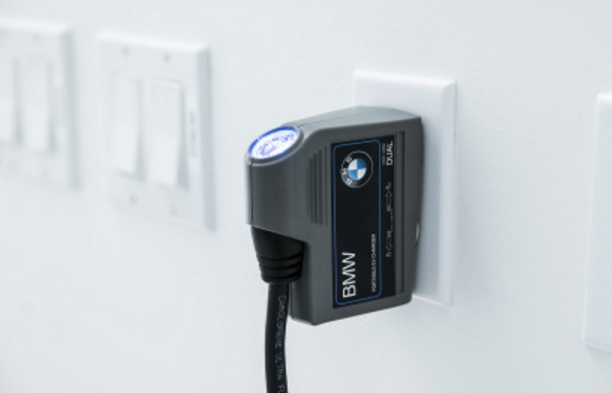 convenient 20 ft. charging cord. That brings 120-volt and 240-volt charging to BMW and Mini electric cars. The TurboCord charger can be purchased with the EV at all North American BMW and Mini dealerships and online. It also integrates state-of-the-art safety features such as unit and plug temperature monitoring, automatic shut-off and a rugged, being waterproof, and submersible enclosure (NEMA 6p) that enables users to safely and reliably charge anywhere indoor and outdoor.
convenient 20 ft. charging cord. That brings 120-volt and 240-volt charging to BMW and Mini electric cars. The TurboCord charger can be purchased with the EV at all North American BMW and Mini dealerships and online. It also integrates state-of-the-art safety features such as unit and plug temperature monitoring, automatic shut-off and a rugged, being waterproof, and submersible enclosure (NEMA 6p) that enables users to safely and reliably charge anywhere indoor and outdoor.
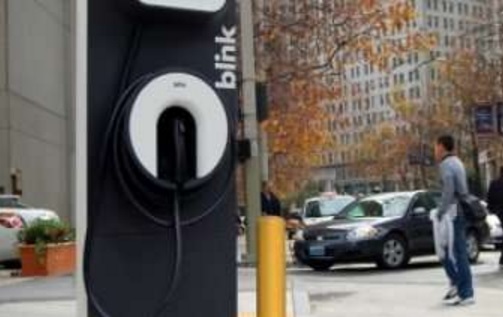 2013. Car Charging Group began operating thousands of Blink charging stations, and the software that manages, monitors, and tracks these stations and stores charging data. Blink Charging Co. also started a 1 for 50 reverse stock split, effective two days ago. After a period of 20 business days from then, the company’s stock symbol will be CCGID and will then revert to CCGI. The company’s website has switched over to www.BlinkCharging.com. “Changing the name of the Company to Blink Charging continues our integration efforts and corporate rebranding, which allows us to unify our identity and illustrates the company’s primary products and services,” stated Mike Calise, Blink Charging’s CEO. “The reverse split is also another step in the right direction towards achieving a listing on a national stock exchange and to build additional shareholder value.”
2013. Car Charging Group began operating thousands of Blink charging stations, and the software that manages, monitors, and tracks these stations and stores charging data. Blink Charging Co. also started a 1 for 50 reverse stock split, effective two days ago. After a period of 20 business days from then, the company’s stock symbol will be CCGID and will then revert to CCGI. The company’s website has switched over to www.BlinkCharging.com. “Changing the name of the Company to Blink Charging continues our integration efforts and corporate rebranding, which allows us to unify our identity and illustrates the company’s primary products and services,” stated Mike Calise, Blink Charging’s CEO. “The reverse split is also another step in the right direction towards achieving a listing on a national stock exchange and to build additional shareholder value.”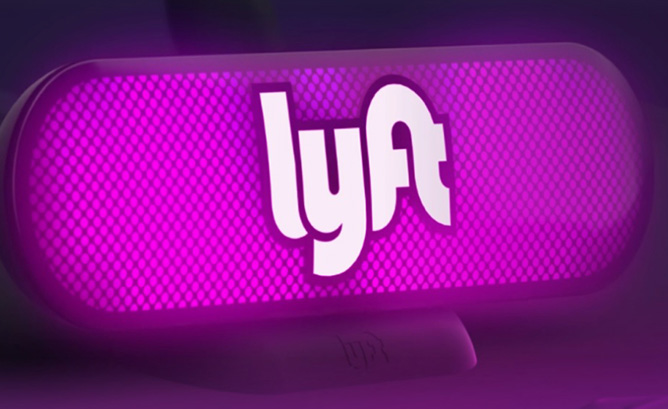 An upgraded smartphone app has helped, along with a new marketing campaign that’s helping Lyft grow from serving 160 more cities for a total of about 350. Lyft is an ideal situation, with its General Motors partnership and recent deals with other companies on autonomous vehicle test projects. Uber’s excessive market valuation and ability to raise about $14 billion in private equity since its inception is causing a huge shakeup as investors want to see transparent, professional management of the company. Uber this week hired Expedia CEO Dara Khosrowshahi to take the place of ousted and controversial founder Travis Kalanick. The new CEO is also known for being outspoken, and is expected to bring the company forward to an initial public offering within 18 to 36 months. Lyft co-founders Logan Green and John Zimmer work on keeping the company simple and direct. They say they haven’t done beyond asking employees and drivers to make sure passengers are treated like guests at a fine hotel.
An upgraded smartphone app has helped, along with a new marketing campaign that’s helping Lyft grow from serving 160 more cities for a total of about 350. Lyft is an ideal situation, with its General Motors partnership and recent deals with other companies on autonomous vehicle test projects. Uber’s excessive market valuation and ability to raise about $14 billion in private equity since its inception is causing a huge shakeup as investors want to see transparent, professional management of the company. Uber this week hired Expedia CEO Dara Khosrowshahi to take the place of ousted and controversial founder Travis Kalanick. The new CEO is also known for being outspoken, and is expected to bring the company forward to an initial public offering within 18 to 36 months. Lyft co-founders Logan Green and John Zimmer work on keeping the company simple and direct. They say they haven’t done beyond asking employees and drivers to make sure passengers are treated like guests at a fine hotel.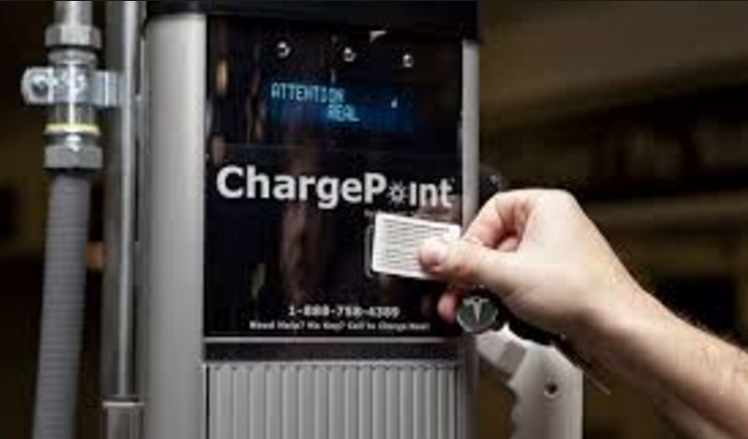 ChargePoint, operator of one of the world’s largest charging station networks for electric cars, joins other players in the game including utilities, engineering groups, automakers, and startups seeking to establish strong footing. BMW, Daimler, and Siemens already have a strong presence in Europe as demand continues to increase – and they see ChargePoint as an option to expand their networks. The charging company has so far raised about $300 million in funds, with Daimler and Siemens joining up this year. BMW first supplied funds in 2012. The company also operates about 40,000 charging spots in the U.S. and Mexico.
ChargePoint, operator of one of the world’s largest charging station networks for electric cars, joins other players in the game including utilities, engineering groups, automakers, and startups seeking to establish strong footing. BMW, Daimler, and Siemens already have a strong presence in Europe as demand continues to increase – and they see ChargePoint as an option to expand their networks. The charging company has so far raised about $300 million in funds, with Daimler and Siemens joining up this year. BMW first supplied funds in 2012. The company also operates about 40,000 charging spots in the U.S. and Mexico. leaving in June. Kalanick had been overseeing the company as it eventually reached $70 billion in estimated market valuation until a series of controversies took over this year – driving investors to shake up Uber management. Khosrowshahi has been an outspoken critic of the Trump administration’s immigration policy, which was another heated issue for Uber earlier this year. His family had immigrated to the U.S. during the Iranian revolution. Expedia, along with Amazon, became one of two technology companies to contribute declarations to a lawsuit filed by Washington State’s attorney general objecting to the travel ban executive order. That had focused on seven predominantly Muslim countries. Other finalists for the Uber CEO position include Jeffrey Immelt, the former chief of General Electric, and Meg Whitman, the chief of Hewlett Packard Enterprise, the sources said.
leaving in June. Kalanick had been overseeing the company as it eventually reached $70 billion in estimated market valuation until a series of controversies took over this year – driving investors to shake up Uber management. Khosrowshahi has been an outspoken critic of the Trump administration’s immigration policy, which was another heated issue for Uber earlier this year. His family had immigrated to the U.S. during the Iranian revolution. Expedia, along with Amazon, became one of two technology companies to contribute declarations to a lawsuit filed by Washington State’s attorney general objecting to the travel ban executive order. That had focused on seven predominantly Muslim countries. Other finalists for the Uber CEO position include Jeffrey Immelt, the former chief of General Electric, and Meg Whitman, the chief of Hewlett Packard Enterprise, the sources said.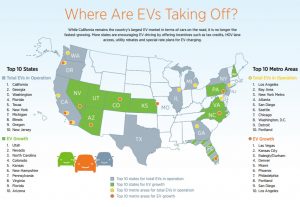 ChargePoint and McKinsey & Co. have put out studies in the past week offering an interesting look at the state of plug-in electrified vehicles and the charging infrastructure in the U.S. and abroad.
ChargePoint and McKinsey & Co. have put out studies in the past week offering an interesting look at the state of plug-in electrified vehicles and the charging infrastructure in the U.S. and abroad. Utilities supporting charging:
Utilities supporting charging:  As you probably know by now, the Federal Highway Administration released a map last week showing 55 routes across the U.S. for charging plug-in vehicles and refueling alternative fuel vehicles, with 48 designated charging routes in the new corridor. The Alternative Fuel Corridors covers 35 states and nearly 85,000 miles, according the U.S. Department of Transportation’s FHWA. More miles will be added to the network to accommodate electric, hydrogen, propane autogas, and natural gas vehicles as more alternative fueling and charging stations are built.
As you probably know by now, the Federal Highway Administration released a map last week showing 55 routes across the U.S. for charging plug-in vehicles and refueling alternative fuel vehicles, with 48 designated charging routes in the new corridor. The Alternative Fuel Corridors covers 35 states and nearly 85,000 miles, according the U.S. Department of Transportation’s FHWA. More miles will be added to the network to accommodate electric, hydrogen, propane autogas, and natural gas vehicles as more alternative fueling and charging stations are built.